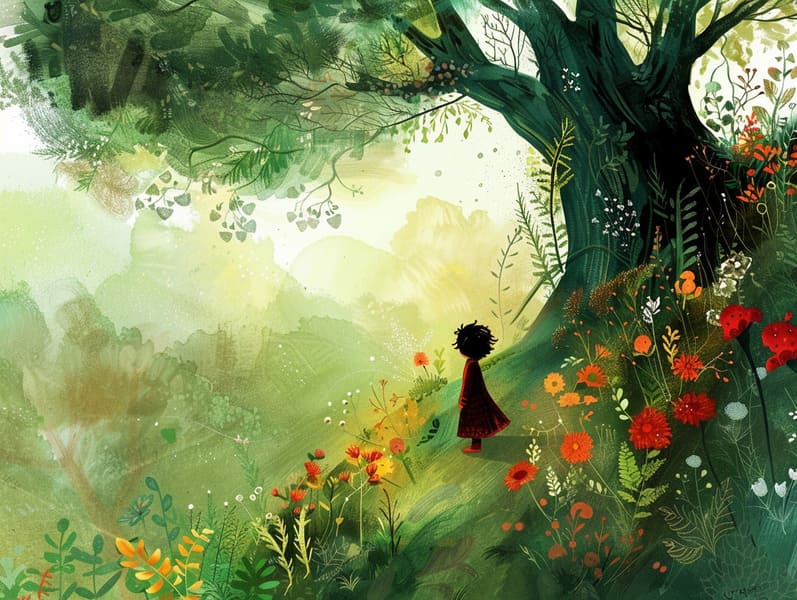
Timeless fairy tales have deep roots. These tales have been conveyed from one generation to the next well before they were ever published. They arose from a variety of civilizations, including American traditions. They were initially conveyed among elders, often carrying themes and messages relevant to the societal norms and beliefs of the time.
Jacob and Wilhelm Grimm, Jacob and Wilhelm Grimm, were among the first to gather and publish many of these beloved narratives. Their collection, "Grimm's Fairy Tales," included stories like "The True Bride," "Little Brother and Little Sister," and "The True Story of Snow White," which have since become cornerstones in the world of classic fairy tales. Similarly, Andersen's imaginative stories, such as "The Little Mermaid," and "The Duckling's Story," have stolen hearts worldwide, cementing their place in the pantheon of famous fairy tales.
Despite their age, classic fairy tales remain as applicable as ever, especially as kids' bedtime tales. These enchanting tales are now available in multiple formats, including gorgeously illustrated books, charming animations, and digital fairy tales.
Their enduring popularity can be traced to several magical reasons:
Important Morals: Ancient fairy tales often teach important moral lessons. Narratives like "The Wolf and the Liar" teach the value of sincerity, while "The Tortoise and the Hare" exemplify the benefits of determination and humbleness. These tales offer children clear distinctions between ethical and unethical, building their moral compass in a kind yet impactful way.
Warmth and Understanding: Fairy tales frequently portray heroines facing struggles and tests, stimulating audiences to connect with their struggles and encourage their triumphs. For instance, "The Tale of Beauty and the Beast" demonstrates the necessity of valuing inner qualities to acknowledge the true nature of a soul, building compassion and appreciation.
Cultural Perception: Many old fairy tales are rooted in the cultural contexts from which they originated. Exploring these stories can provide fascinating glimpses into different beliefs, cultivating a sense of global understanding and respect.
Fantasy and Innovation: The extraordinary elements in ancient fairy tales—talking beasts—generate children’s imaginations. These stories carry readers to supernatural realms, kindling creative dreams and a sense of excitement that continues a lifetime.
Traditional fairy tales are not only fascinating but also teaching. They serve as alluring tools in building various intellectual and emotional capacities in little ones. When classic fairy tales are told out loud, they advance communication skills by teaching new words and complicated sentence structures. This practice also boosts auditory skills and attention span, as kids pay close attention, ready to see what happens next.
Furthermore, examining the themes and characters of timeless fairy tales can develop analytical skills and cognitive skills. Little ones are guided to recognize patterns, expect results, and make sense of cause and effect. These deliberations awesome site also assist the young convey their thoughts and feelings, boosting their emotional intelligence.
In today’s online age, the abundance of online storybooks has made these narratives more accessible than ever. Internet resources and mobile apps feature comprehensive collections of children's fairy tales that can be enjoyed or listened via anytime, anywhere. Fairy tales spoken are particularly prevalent, extending an fun way for kids to immerse in these charming stories. Read-aloud stories and read-to-me stories bring characters and settings to life, often augmented by fantastical musical scores and harmonies that raise the narrative journey.
The everlasting appeal of traditional fairy tales lies in their ability to alter to modern times while maintaining their key morals. Contemporary reinterpretations of these tales often include more varied characters and modern settings, making them relevant to today’s audience. However, the key lessons of heroism, compassion, and fairness remain unchanged, continuing to appeal to listeners of all ages.
Old fairy tales also offer a sense of peace and predictability. They deliver up a coherent narrative with a evident beginning, middle, and end, often ending with the termination of conflicts and the triumph of good over bad. This constancy can be relieving for young ones, presenting a sense of stability in an always shifting world.
Traditional fairy tales continue to mesmerize and train new generations, maintaining their charm and importance in modern society. As children's bedtime stories, they impart upon a perfect blend of captivation and insight, nurturing moral values, empathy, and creativity. The proliferation of web-based fairy tales and the sought after status of fairy tales told out loud ensure that these old fairy tales remain acquirable to new generations.
By holding onto and releasing these narratives, we continue to acknowledge the rich tapestry of myths and cultural heritage. Whether you are reading a vividly illustrated book, exploring a virtual collection, or listening to an narrated book, the spell of Grimm's fairy tales is always within reach. These stories teach us of the enduring influence of narratives and its ability to gather us across centuries and lands.
Even if you are accessing a beautifully illustrated book, seeing a online library, or listening on an audiobook, the majesty of classic fairy tales is always within reach.
These stories convey of the undying spell of stories and its ability to unify us across centuries and lands, creating a bond that delights and instructs alike.